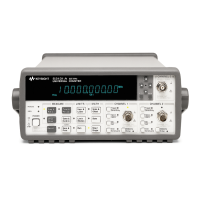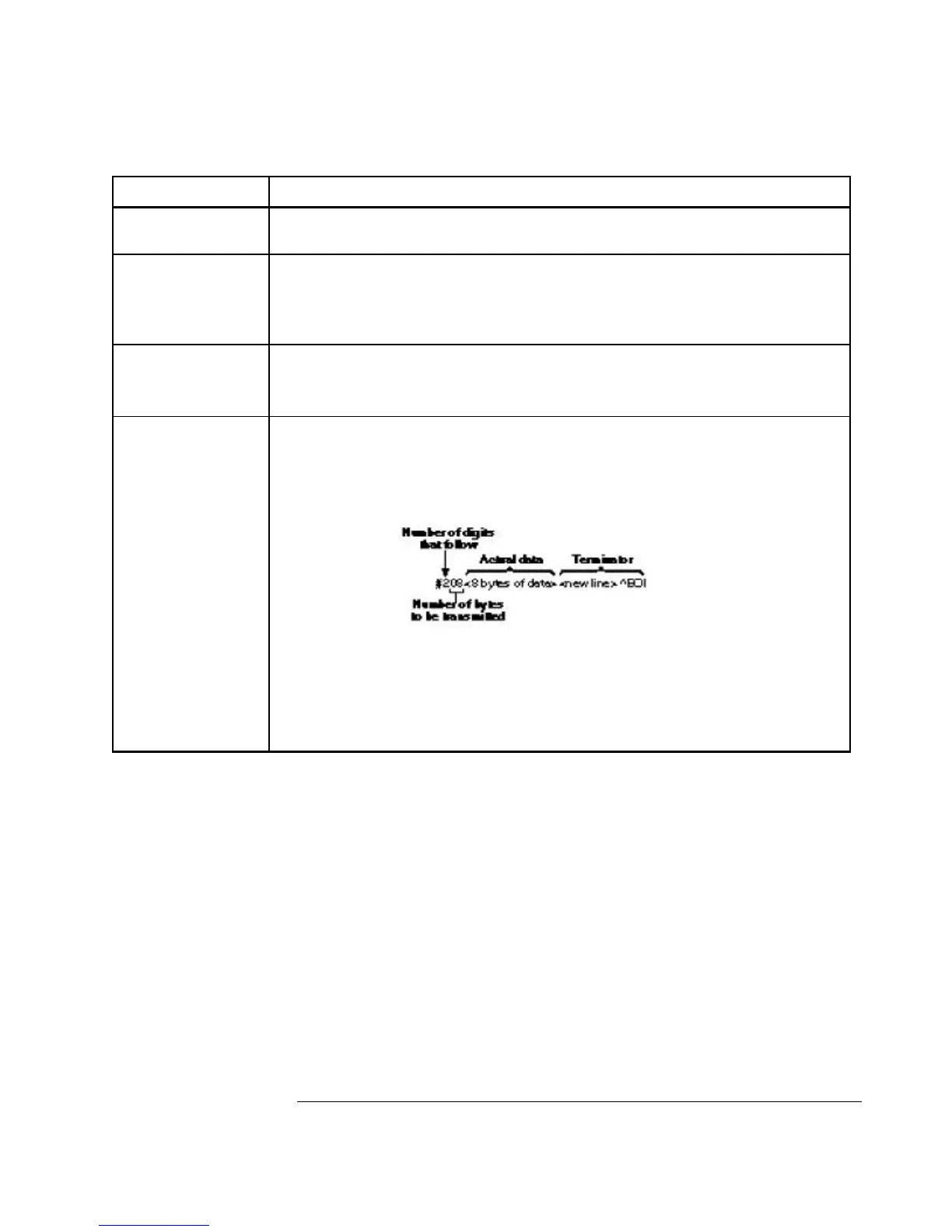Chapter 3 Programming Your Universal Counter for Remote Operation
Overview of Response Message Formats
3-18 Programming Guide
Table 3-3. Response Message Data Types (Continued)
Type Description
<Boolean> A single ASCII-encoded byte, 0 or 1, is returned for the query of settings that use
<Boolean> parameters.
<literal> ASCII-encoded bytes corresponding to the short form of the literal used as the
command parameter.
For example, if the :CALC3:AVER:TYPE MAXimum command is sent to the
Counter, the :CALC3:AVER:TYPE? response would be MAX.
<string> A string response consists of ASCII characters enclosed by double quotes.
For example, string data is used for the “<error description>” portion of
:SYST:ERR? response and for [:SENS]:FUNC? response.
<definite length
block>
The syntax is a pound sign (#) followed by a non-zero digit representing the
number of digits in the subsequent decimal integer. The decimal integer specifies
the number of 8-bit data bytes being sent. This is followed by the actual data.
The terminator is a line feed asserted with EOI. For example, for transmitting 8
bytes of data, the format might be:
The “2” indicates the number of digits that follow and the two digits “08” indicate
the number of data bytes to be transmitted.
A zero-length block has the format: #0<new line>^EOI
<new line> is defined as a single ASCII-encoded byte corresponding to
10 decimal.

